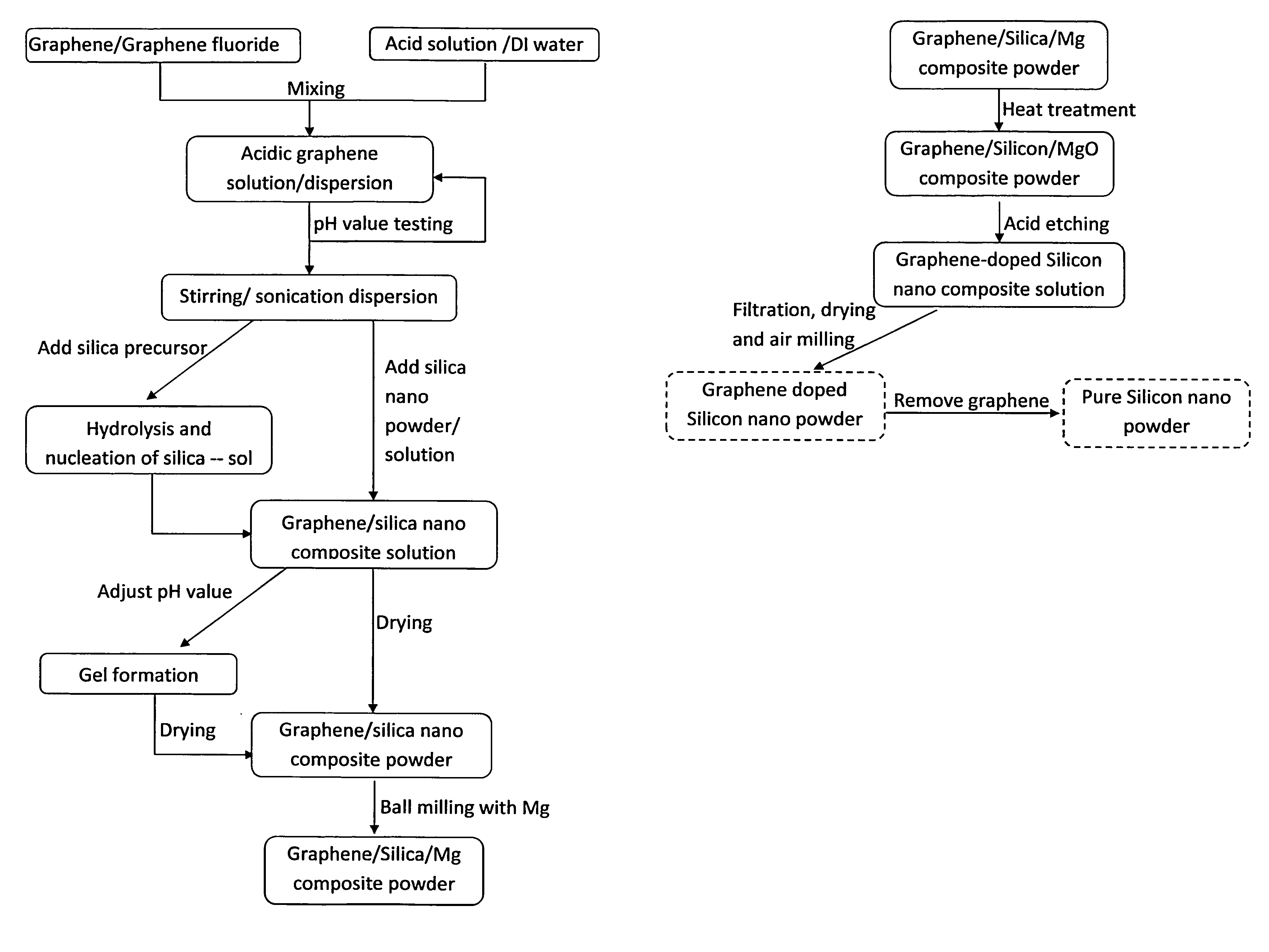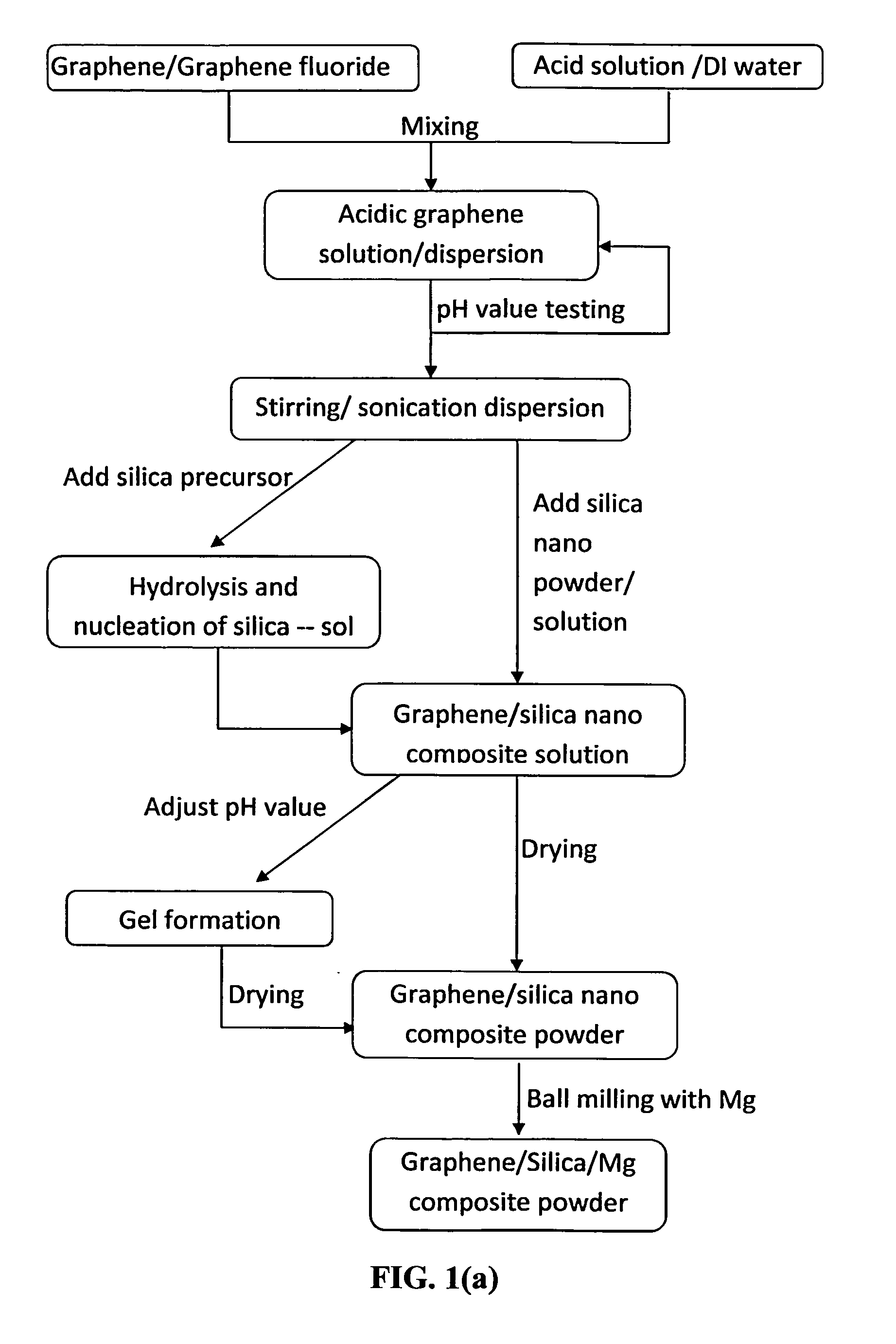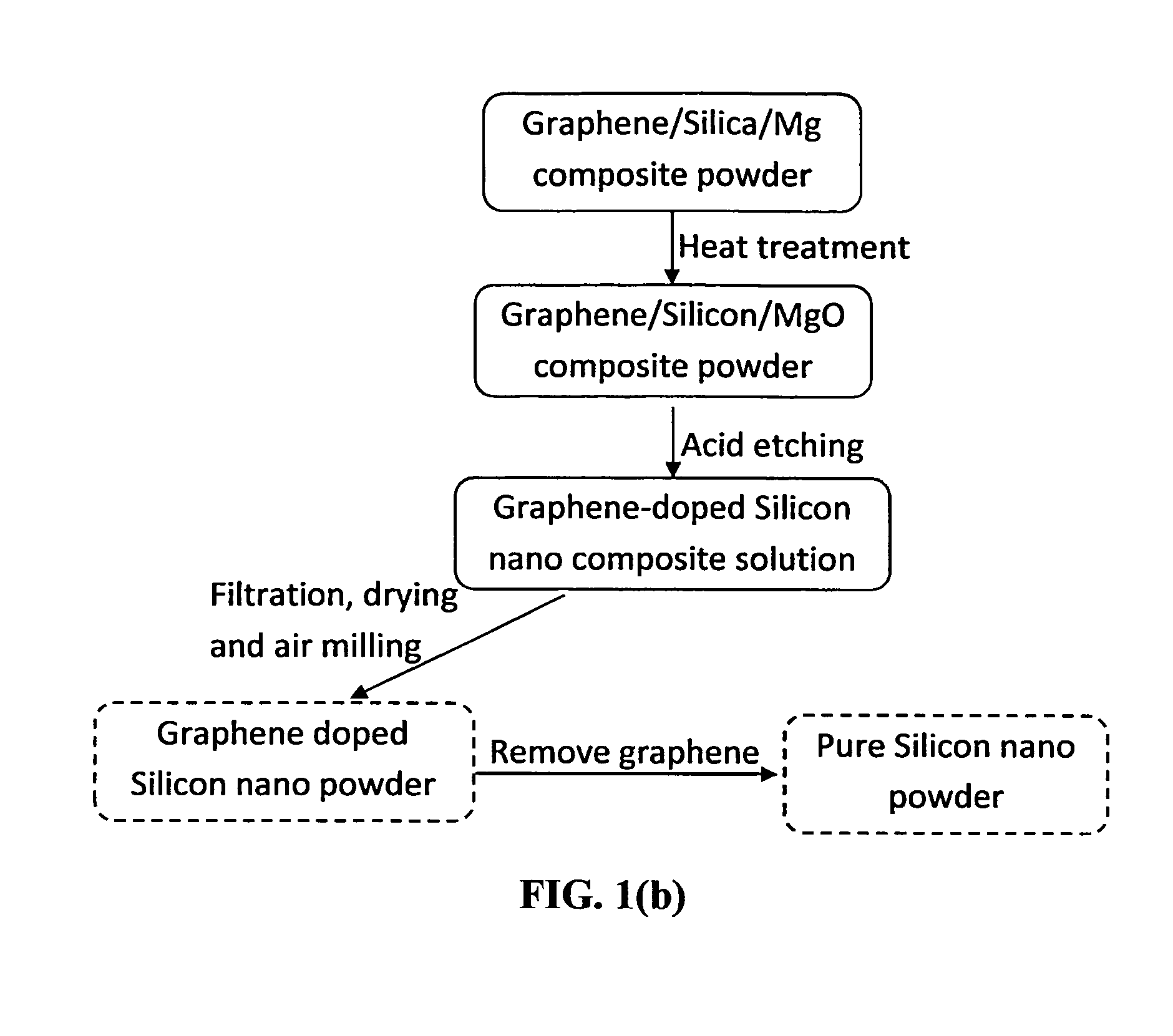Methods for mass-producing silicon nano powder and graphene-doped silicon nano powder
- Summary
- Abstract
- Description
- Claims
- Application Information
AI Technical Summary
Benefits of technology
Problems solved by technology
Method used
Image
Examples
example 1
Graphene-doped Nano Silicon Fabricated from TEOS
[0058]Representative production processes include: diluting 1 wt. % N002-PS to 0.2 wt. % N002-PS by DI water, and placing the diluted PS solution to an ultrasonic bath for an ultrasonication treatment for 30minutes. This is followed by gradually adding TEOS (0.2 wt. % N002-PS: TEOS=5:2) while stirring the PS solution. The procedure of stirring the solution is maintained for 24 hours to achieve a complete hydrolysis of TEOS. Subsequently, the procedure includes dropwise adding 10% NH3·H2O till the formation of gel, herein referred to as the TP gel, and grinding the TP gel to tiny particles. These particles were oven-dried at 120° C. for 2 hours, at 150° C. for 4 hours. The next step involves mixing the dried TP particles with Mg at a ratio of 10:7 and ball-milling the mixture to obtain an intermediate product called TPM. Subsequently, a desired amount of TPM powders is placed in a Nickel crucible and heat treated at 680° C. Also, a cert...
example 2
Removal of Graphene from the Graphene-Doped Si Nanocomposites
[0059]A certain amount of the dried TPM particles was put into a muffle furnace and calcined at 400° C.-600° C. for 2 hours under an air purging condition to remove the carbon content from the nanocomposite, yielding yellow-colored silicon nano powders. As shown in FIG. 6, a very small amount of oxygen was drawn into the furnace to slightly oxidize Si nano particles. Normally, the as prepared nano particle has a SSA value in the range of 50-80 m2 / g.
example 3
Graphene-Doped Nano Silicon from Nano Silica
[0060]In a typical process, 10 wt. % nano silica emulsion is prepared and ultrasonicated at an ultrasonic energy level of 85W (Branson S450 ultrasonicator) for 30 minutes. This is followed by gradually adding 0.2 wt % N002-PS (GO solution) to the silica suspension under constant stirring. The silica to graphene weight ratio is controlled to be 100:1. Because of the polar nature of the nano particles, silica particlescan be readily attached onto the graphene sheet and precipitated out after sedimentation. Then, the supernatant is poured out and the precipitates are filtrated to form a mass of paste. The paste is then dried at 120° C. and the resulting nano composite is mixed with Mg powder to activate the chemical reduction process. The prepared nano particles have a SSA value range of 30 m2 / g to 200 m2 / g for different graphene contents and different sizes of the silica starting material.
PUM
 Login to View More
Login to View More Abstract
Description
Claims
Application Information
 Login to View More
Login to View More - R&D
- Intellectual Property
- Life Sciences
- Materials
- Tech Scout
- Unparalleled Data Quality
- Higher Quality Content
- 60% Fewer Hallucinations
Browse by: Latest US Patents, China's latest patents, Technical Efficacy Thesaurus, Application Domain, Technology Topic, Popular Technical Reports.
© 2025 PatSnap. All rights reserved.Legal|Privacy policy|Modern Slavery Act Transparency Statement|Sitemap|About US| Contact US: help@patsnap.com



